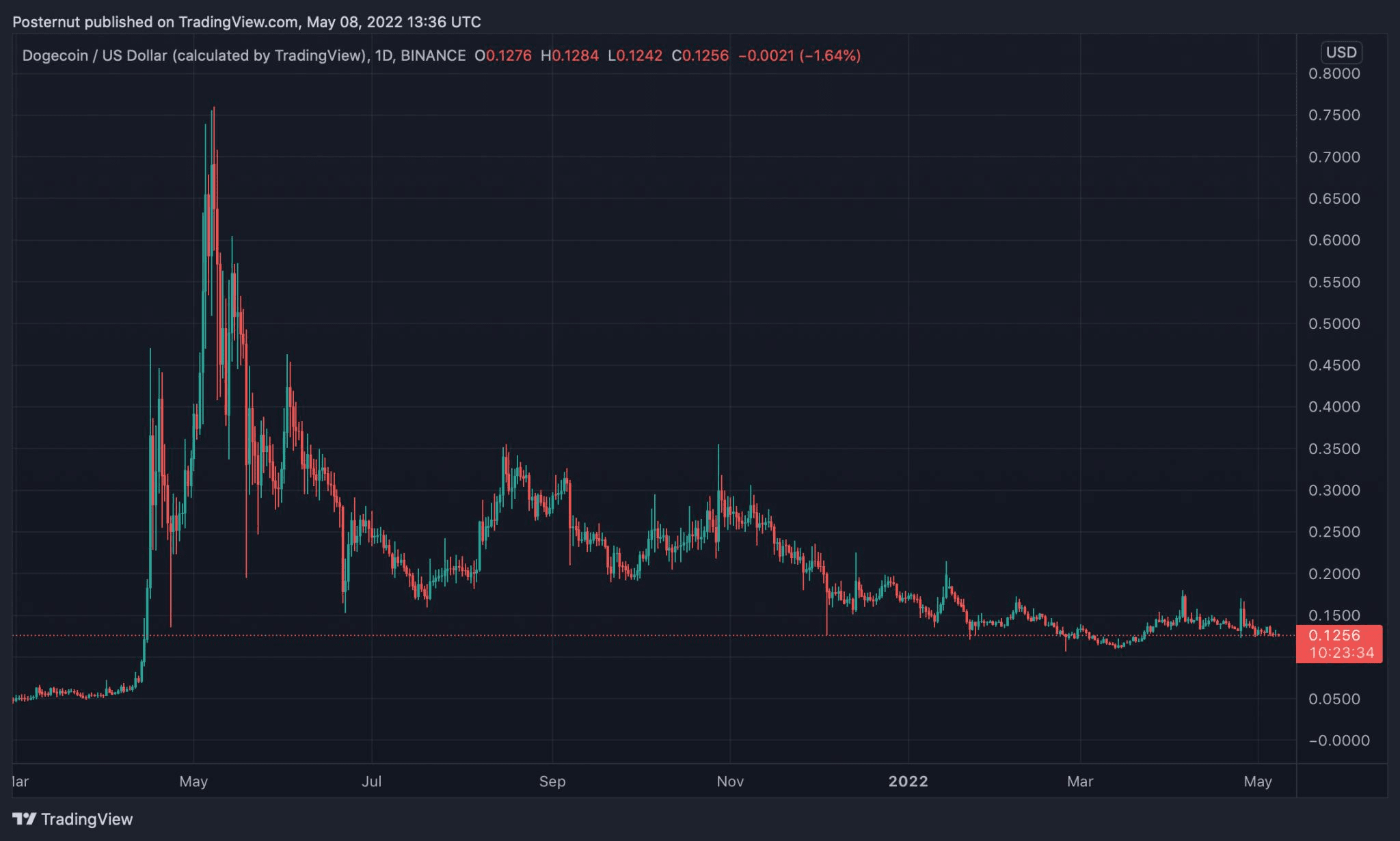Dogecoin (DOGE) has recently performed poorly in the cryptocurrency market, with concerning price trends. Its price has recently entered a new downward trend, briefly falling below the $0.2320 area, and is currently in a consolidation phase, with the risk of further decline below $0.210. This price dynamic has attracted widespread attention from the market, with investors increasingly worried whether Dogecoin is on the brink of a larger crash.
From the price trend perspective, Dogecoin recently broke below $0.240 during its latest decline, subsequently intensifying its downward trend and losing important support levels such as $0.2320 and $0.2250 consecutively, with the price even touching a low of $0.2078 before starting to consolidate. Currently, Dogecoin's price is below the $0.2250 level and fluctuating below the 100-hour simple moving average. On the hourly chart of the DOGE/USD pair, a bearish trendline has also formed with resistance at $0.220. This series of technical indicators shows that Dogecoin is currently under significant downward pressure.
From the market environment perspective, macroeconomic factors significantly impact Dogecoin's price. For instance, Federal Reserve Chairman Jerome Powell's remarks suggesting a pause in interest rate cuts triggered market concerns about risk assets, and as a high-risk meme coin, Dogecoin was particularly affected. When the market feels uneasy about the future economic situation, investors tend to reduce their holdings in high-volatility assets and seek safer assets, leading to sell-offs of cryptocurrencies like Dogecoin. Additionally, Bitcoin, as a benchmark in the cryptocurrency market, has a significant impact on Dogecoin's price. When Bitcoin fell below the $100,000 mark, bearish sentiment spread in the market, and Dogecoin could not escape this trend, resulting in a price drop.

Cryptocurrency analyst Kevin Capital pointed out that Dogecoin's price trend is highly correlated with Bitcoin. During periods of significant market volatility, Dogecoin typically follows Bitcoin's movements. This means that if Bitcoin does not experience a strong rebound, the likelihood of a short-term recovery for Dogecoin is low. Although some analysts, like Master Kenobi, believe that Dogecoin's long-term trend remains positive, the current market sentiment leans toward negativity, and Dogecoin continues to face considerable pressure in the short term.
From historical data, the price of Dogecoin has shown significant volatility. For example, in 2018, Dogecoin recorded a drop of 68.8% in a single quarter, and in the first quarter of this year, Dogecoin also experienced a decline of about 46%, marking the most pessimistic first quarter in seven years. The current price trend of Dogecoin has certain similarities to that of 2018, raising concerns among investors about its future trajectory. If history repeats itself, Dogecoin may continue to decline in the second quarter, although a rebound may occur in the third quarter, but this rebound might just be the peak of this year's market cycle.
However, Dogecoin is not entirely without a turnaround opportunity. If Dogecoin's price can stabilize above the $0.2080 area, it may trigger a new upward trend. From a technical indicator perspective, although the 50-day moving average is still above the 100-day and 200-day moving averages, indicating that the medium-term bullish structure has not completely broken down, if Dogecoin quickly falls below the 50-day moving average (EMA), it will test the support of the 100-day moving average ($0.21); if the 100-day moving average is also breached, it may fall to the 200-day moving average ($0.20). Once these key support levels are all lost, the market will enter a clearly bearish phase, and the prospects for Dogecoin's recovery will significantly weaken. Conversely, if it can hold the current support, Dogecoin is expected to retest the resistance range of $0.24 to $0.26, and breaking this resistance will be a clear signal for the bullish trend to start.
Currently, Dogecoin has fallen into the red zone, and the price trend is not optimistic, with a greater risk of a crash indeed existing. However, the cryptocurrency market is full of uncertainties, and Dogecoin's future trajectory is still influenced by various factors, including Bitcoin's movements, the macroeconomic environment, and changes in its own technical indicators. Investors need to closely monitor market dynamics and make cautious investment decisions.

